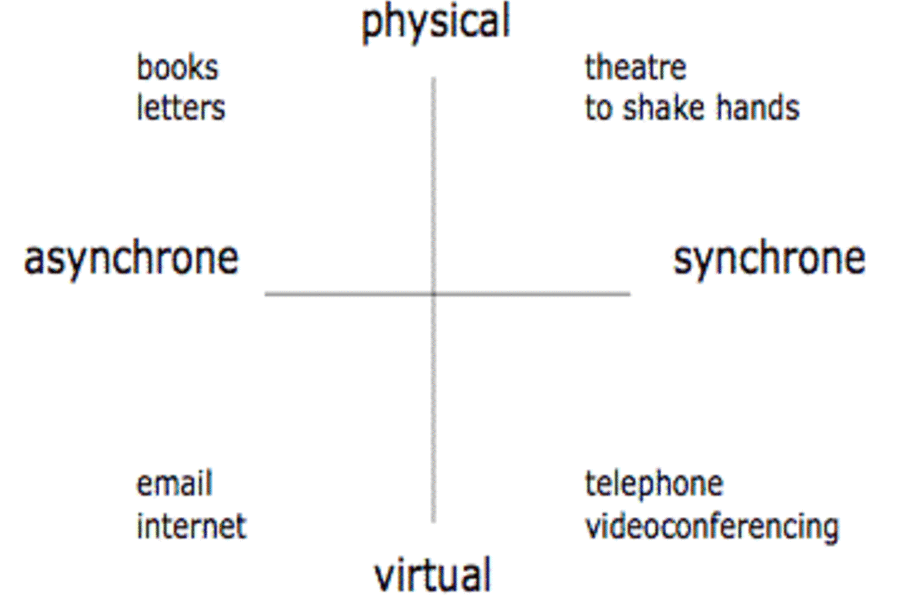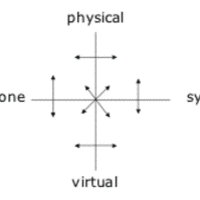Communication models of 'one to one', of 'one to many' and of 'many to many' evolved. The term 'virtual' was introduced when digital technologies entered the media arena in the second half of the 20th century and was used for mediated communication facilitated by these digital technologies. Of course, long before the digital technologies were developed, humankind had found many ways to transcend the limits of time and place. But the digital technologies facilitate an entirely different scale of memory, tracing and tracking capabilities, speed of calculation, reproduction and representation possibilities than could be imagined only a few decades ago.
How to move from one medium to another in one communication trajectory is often unclear. How does a conversation in a bar influence the reading of e-mail, the next phone conversation, a radio broadcast, a publication on the world wide web, the dynamics in the market-place, etc.

This has given rise to a great deal of confusion, particularly when communication processes have a legal status and affect the lives of others. It became clear in the thinking about the design of learning environments that it is necessary to design the processes that take place in the physical, and the processes that take place in the virtual, world, as a single communication process. For example, two people meet, exchange e-mails in which they refer to the meeting and make a phone call as was agreed in the e-mail. A student reads an announcement about a lecture series in a magazine, attends the lectures, finds the material that is to be studied on the web, exchanges questions and answers in a dedicated learning environment, checks the library for more information, does a test while physically present in a room, receives an e-mail with the results and arranges a meeting with the professor because he/she disagrees with the results. Students and teachers - human beings - experience the sequence of communication moments as one communication process in which the different actors have to perform consistently. Every action, be it physical or virtual, is accepted as a moment in the process of communication that has the capacity to affect this communication process and therefore the relation between different actors.




